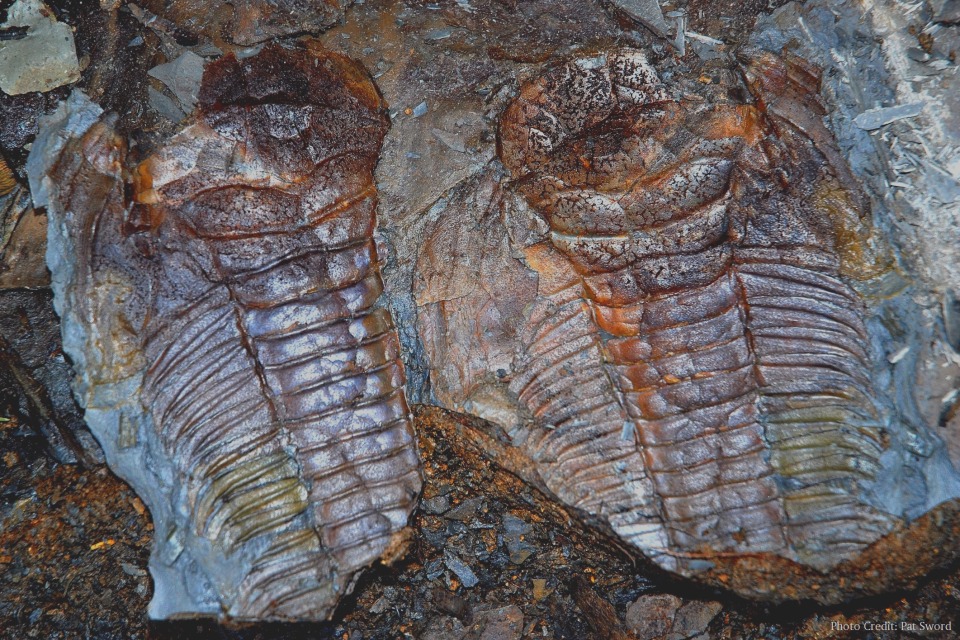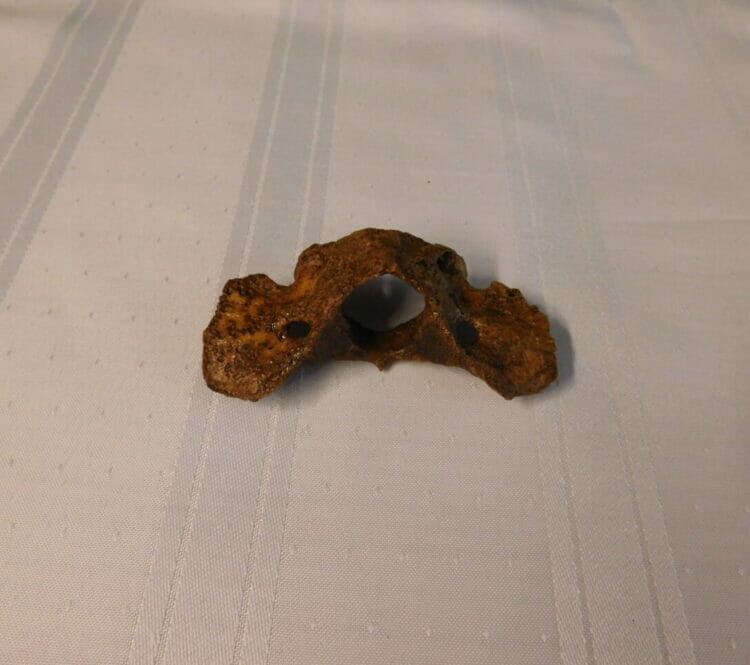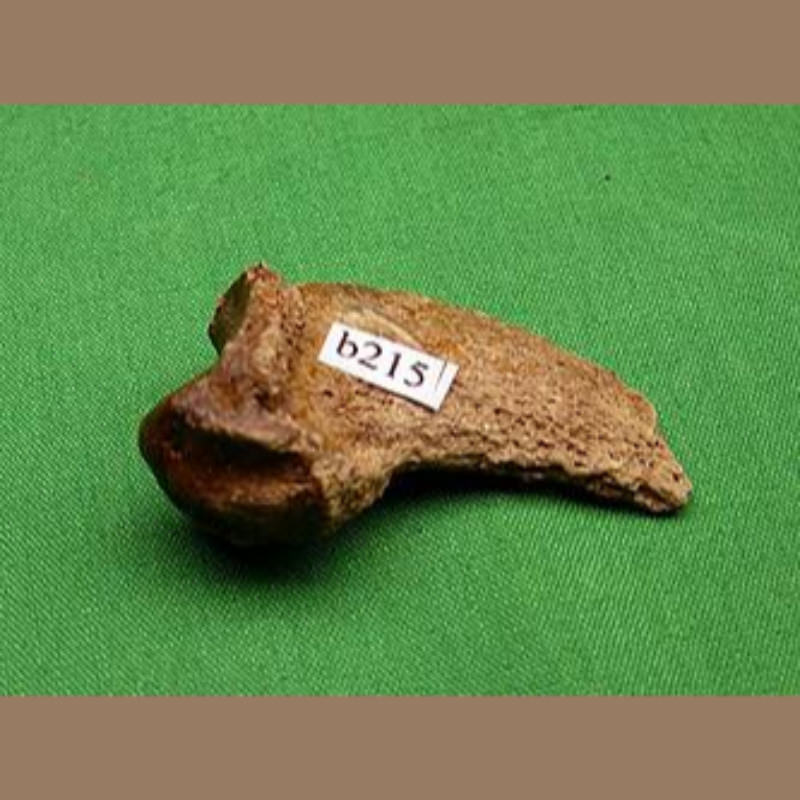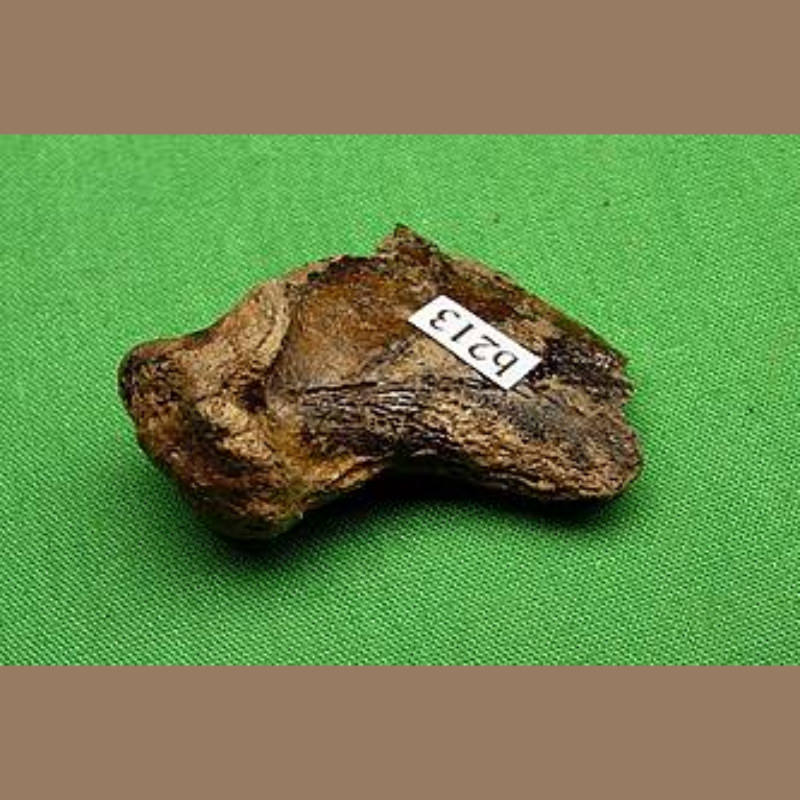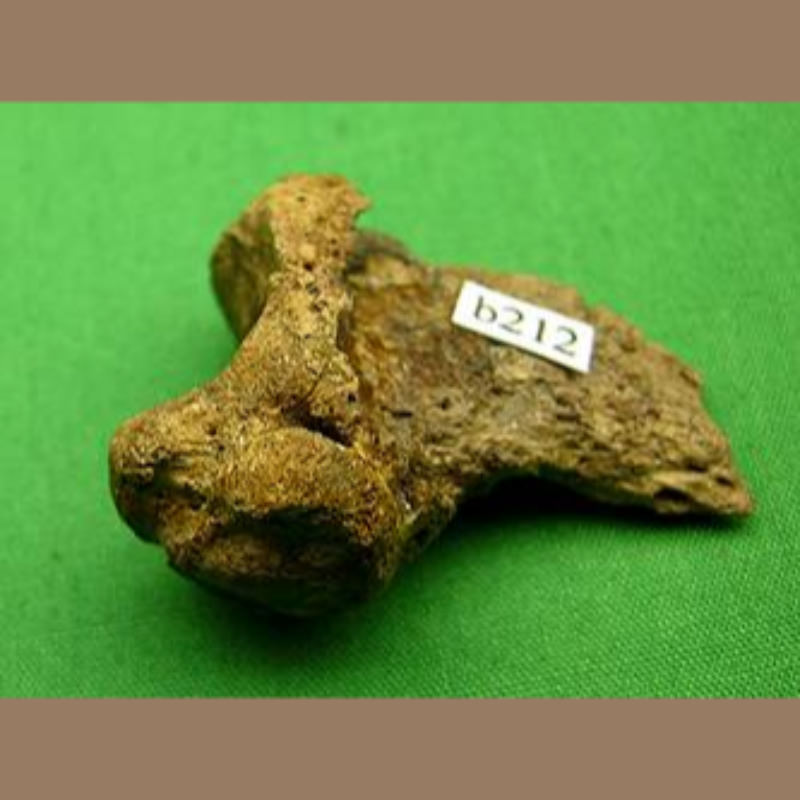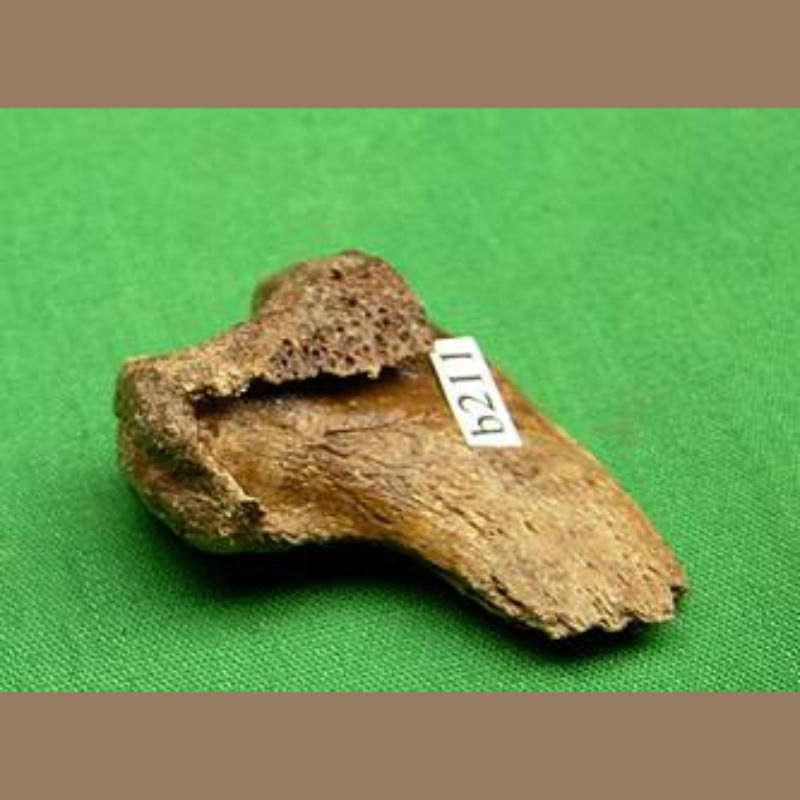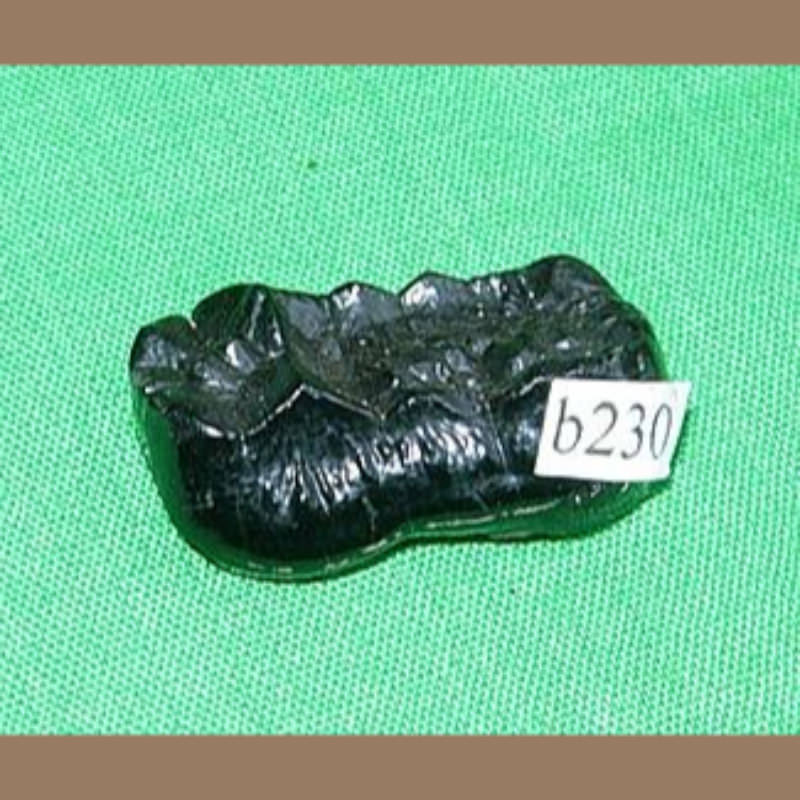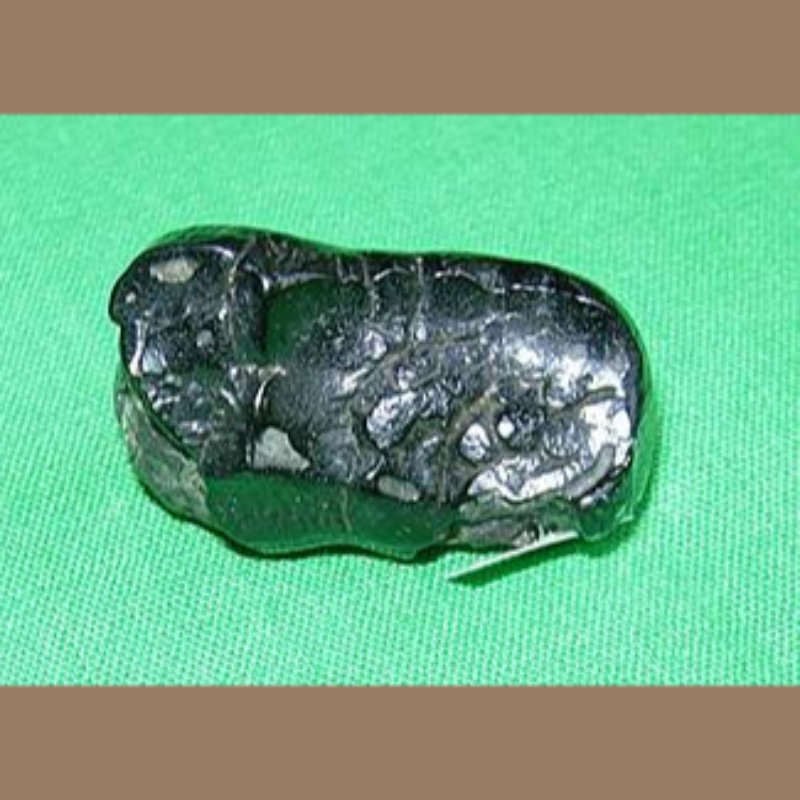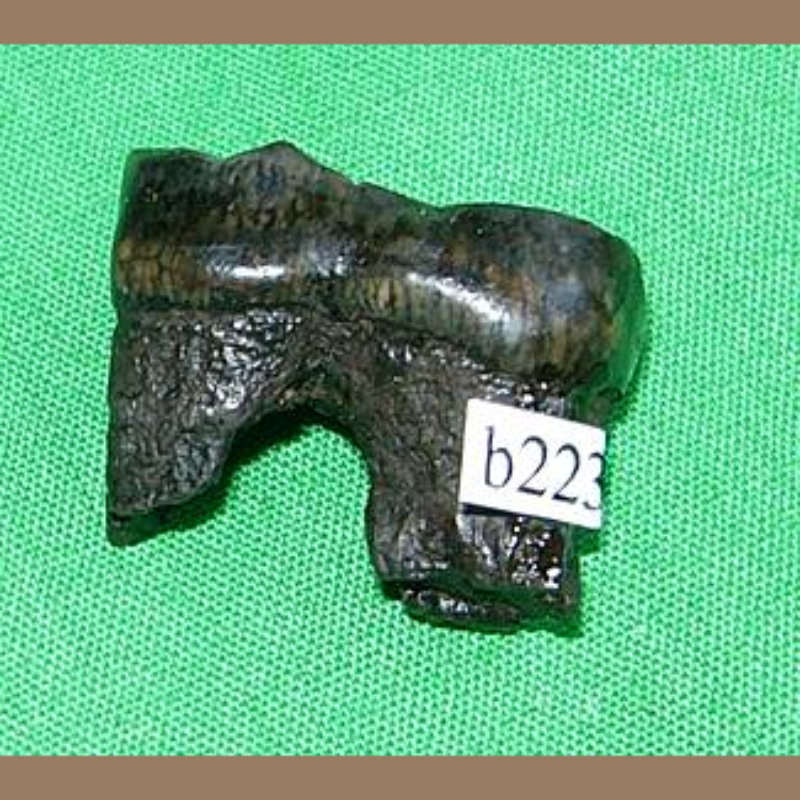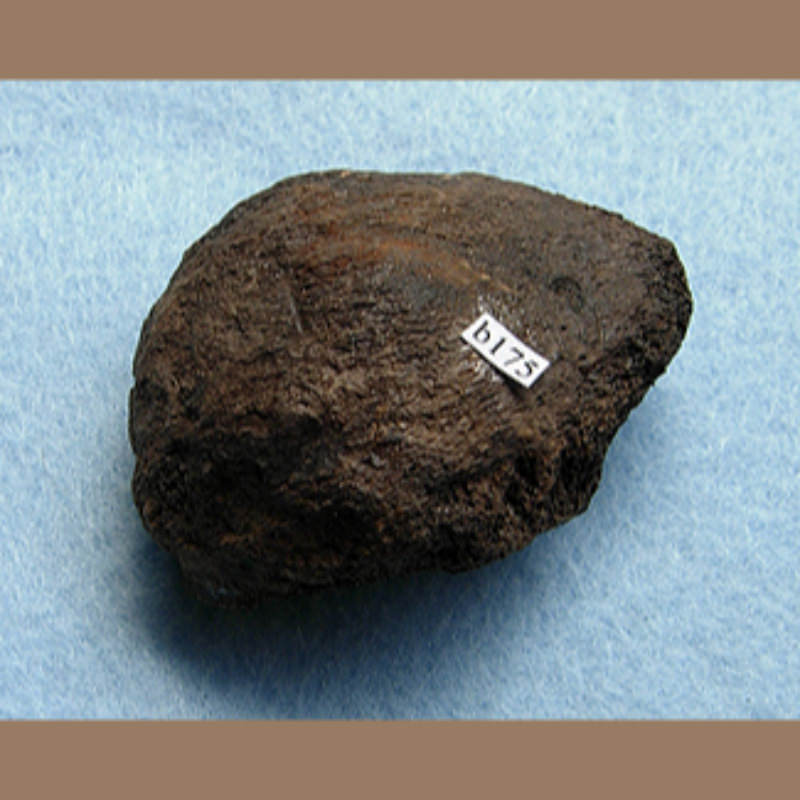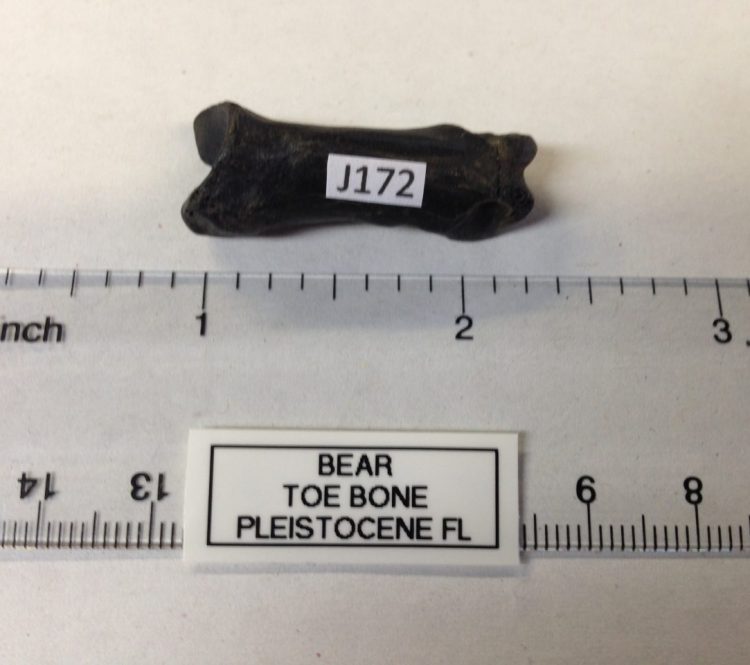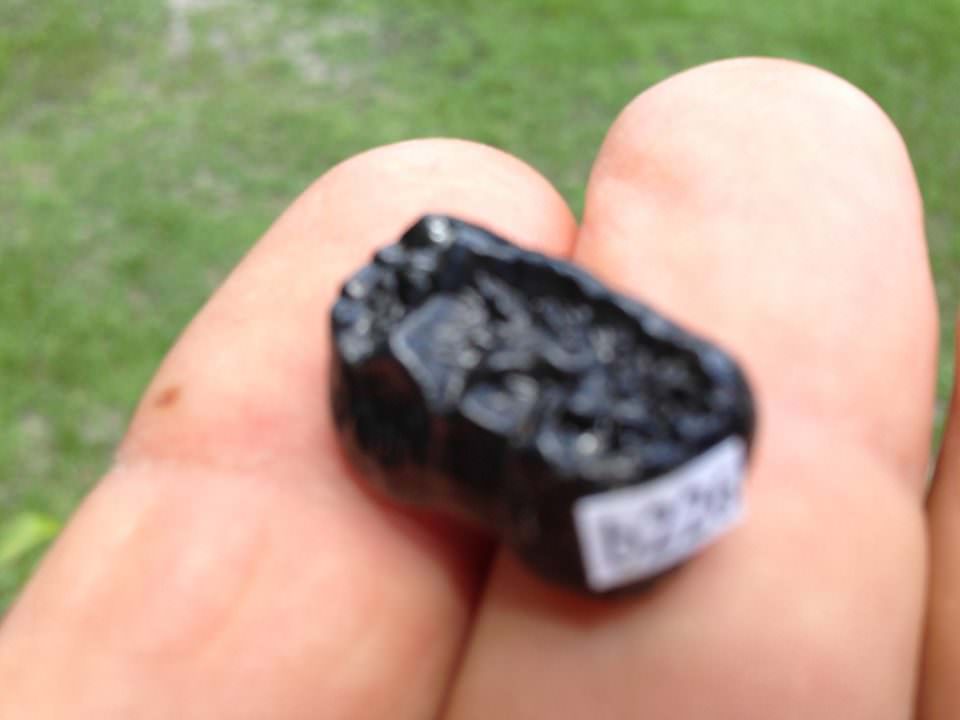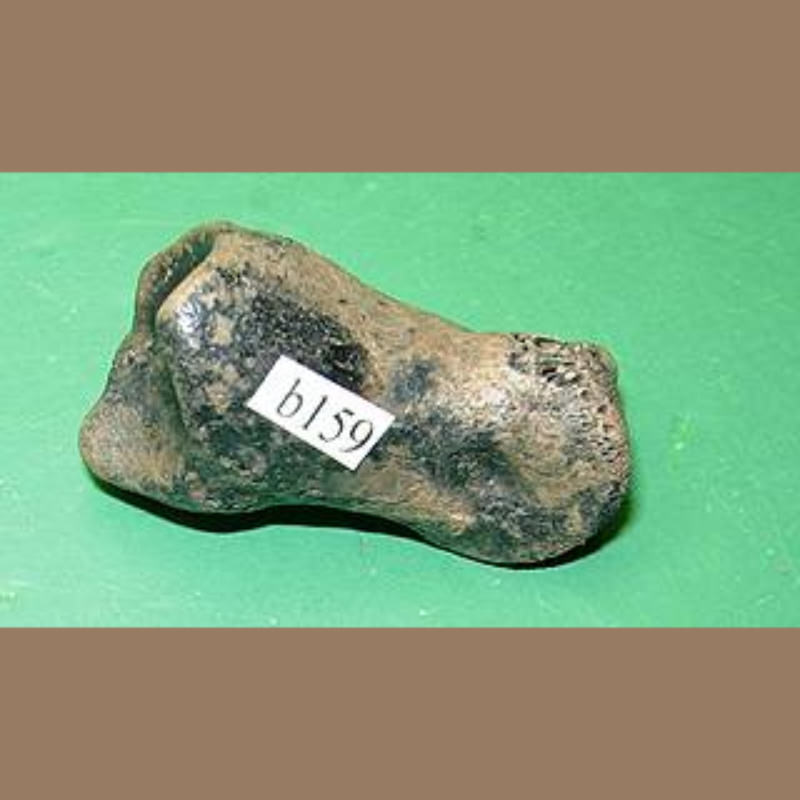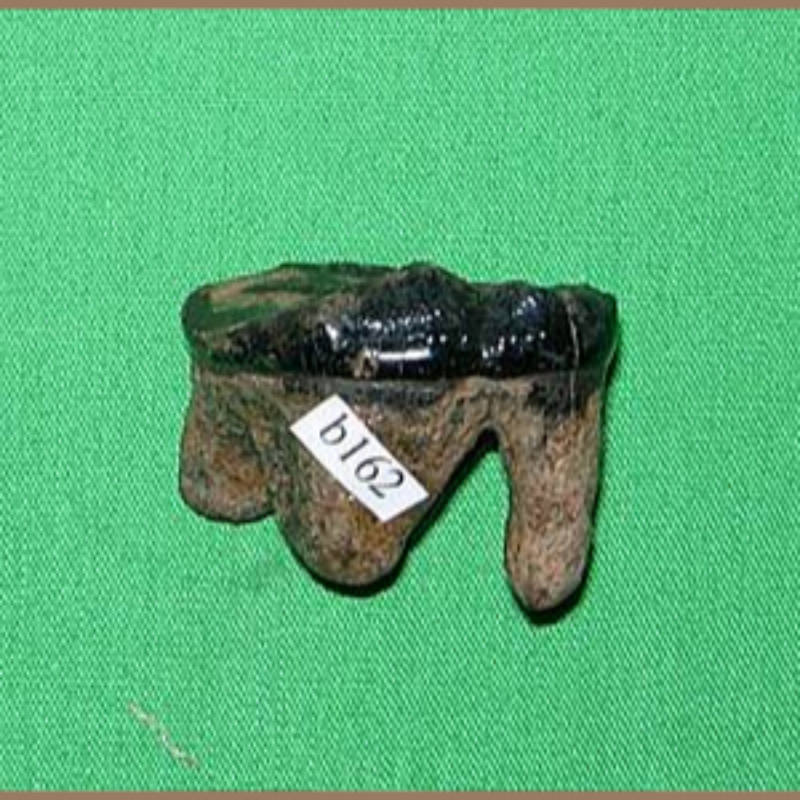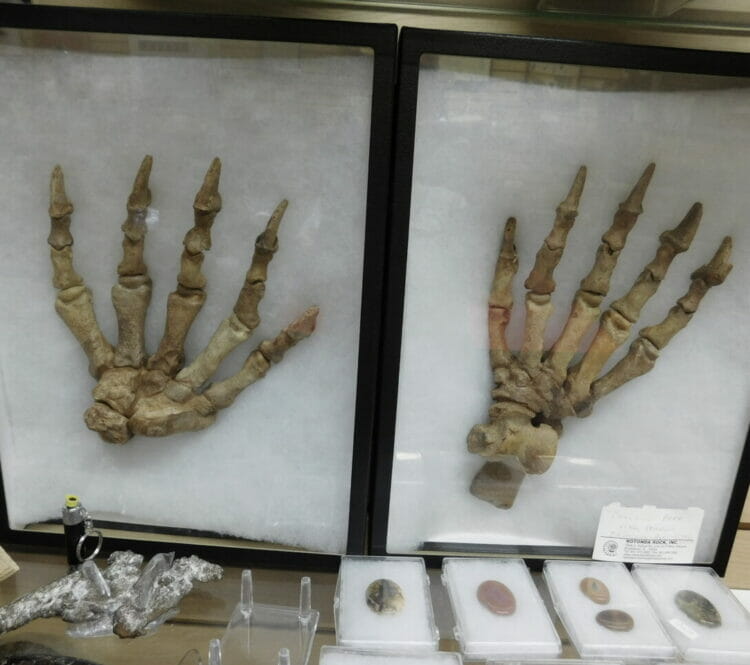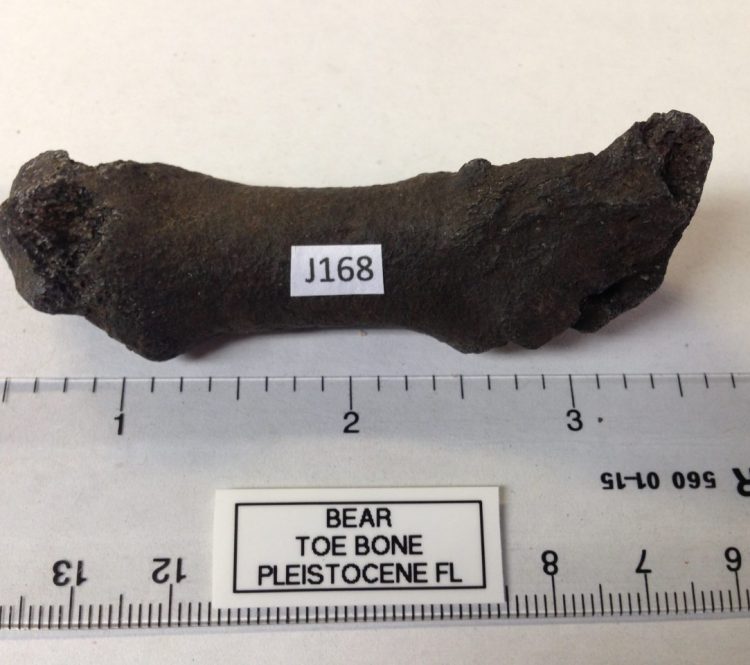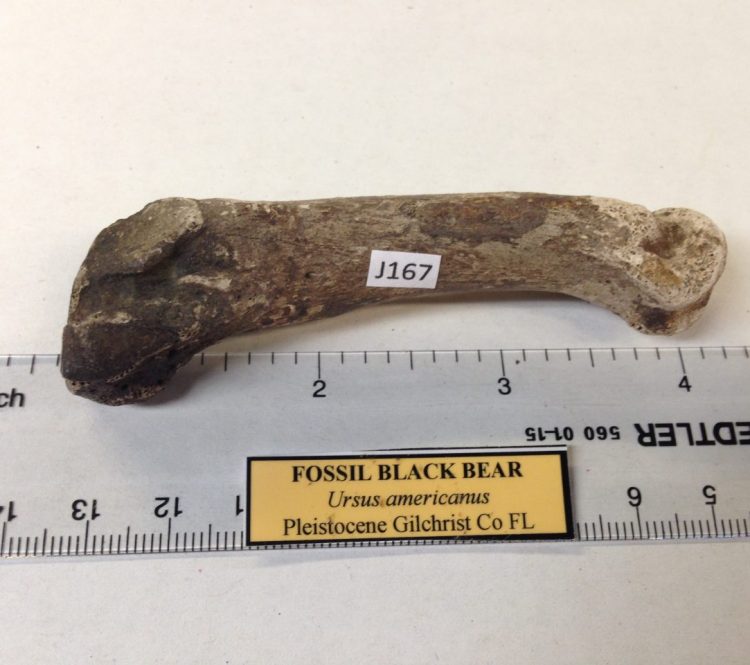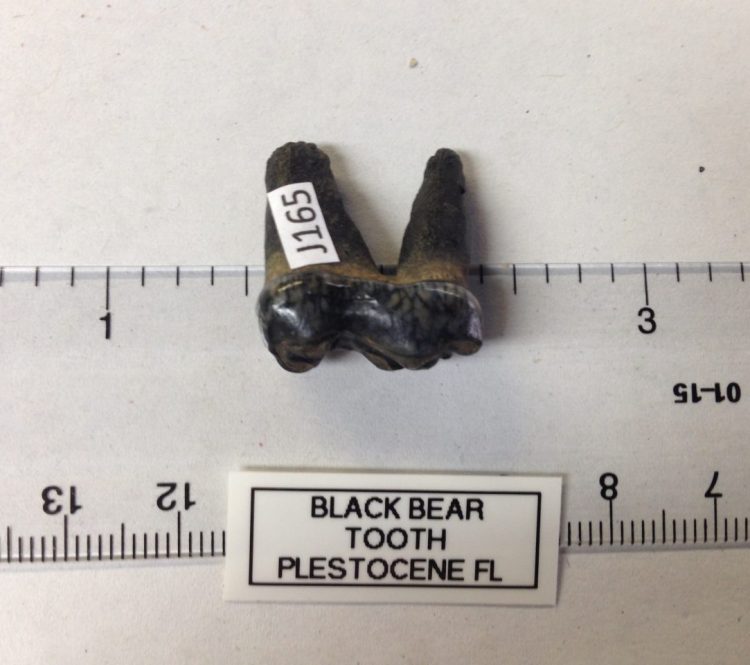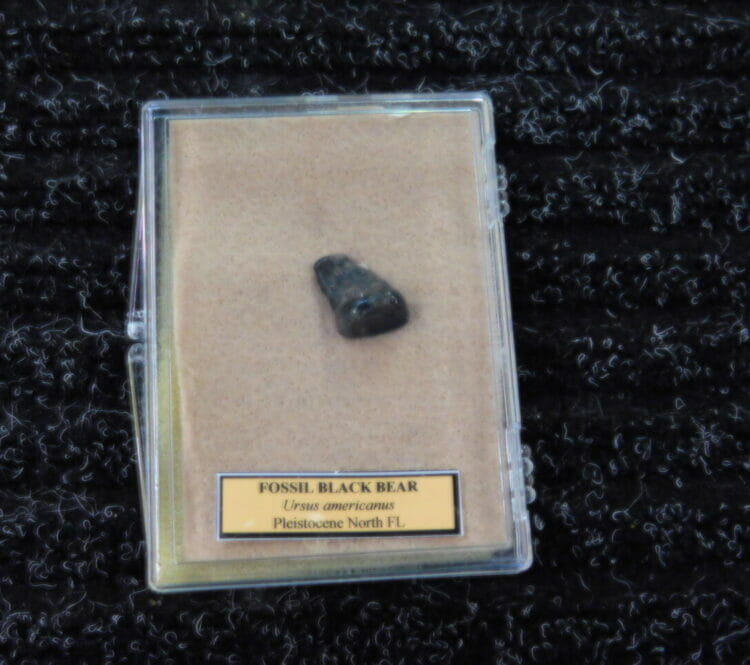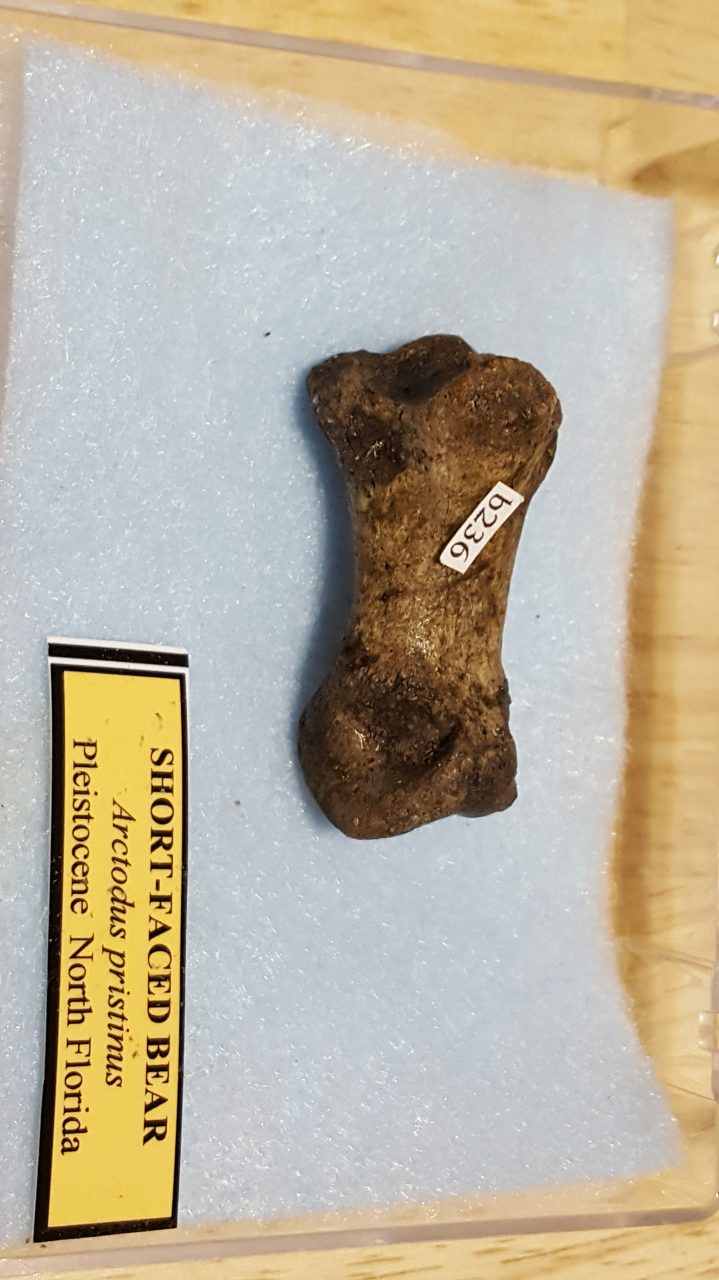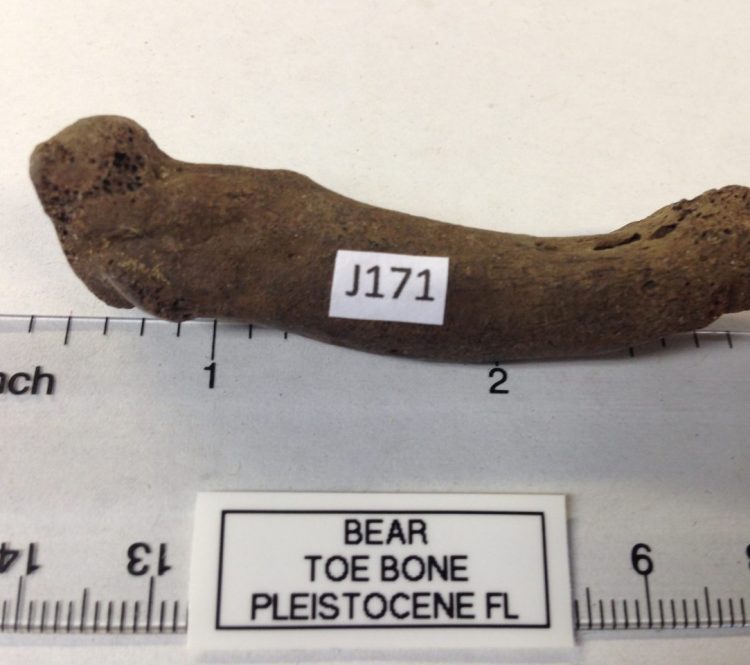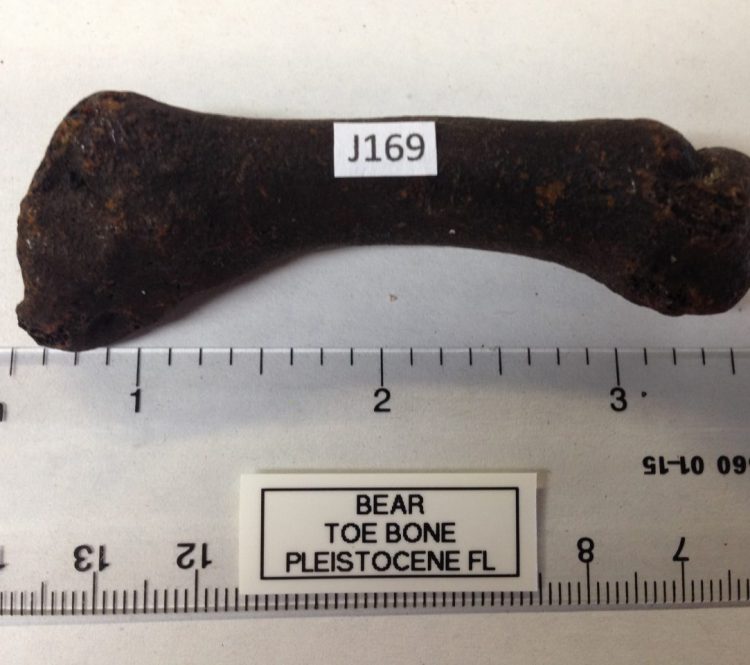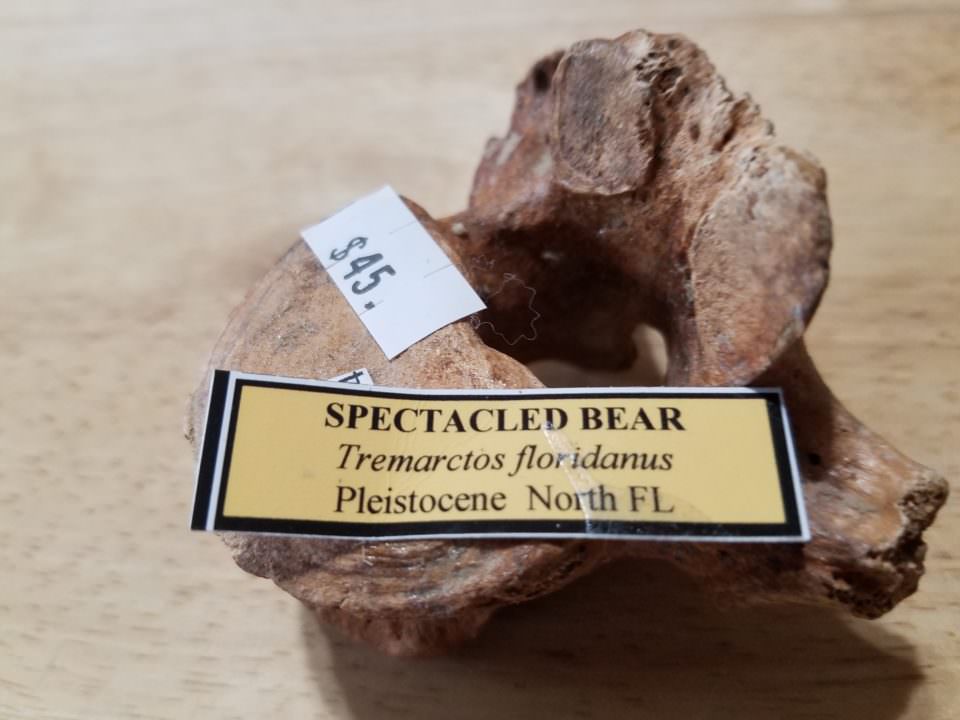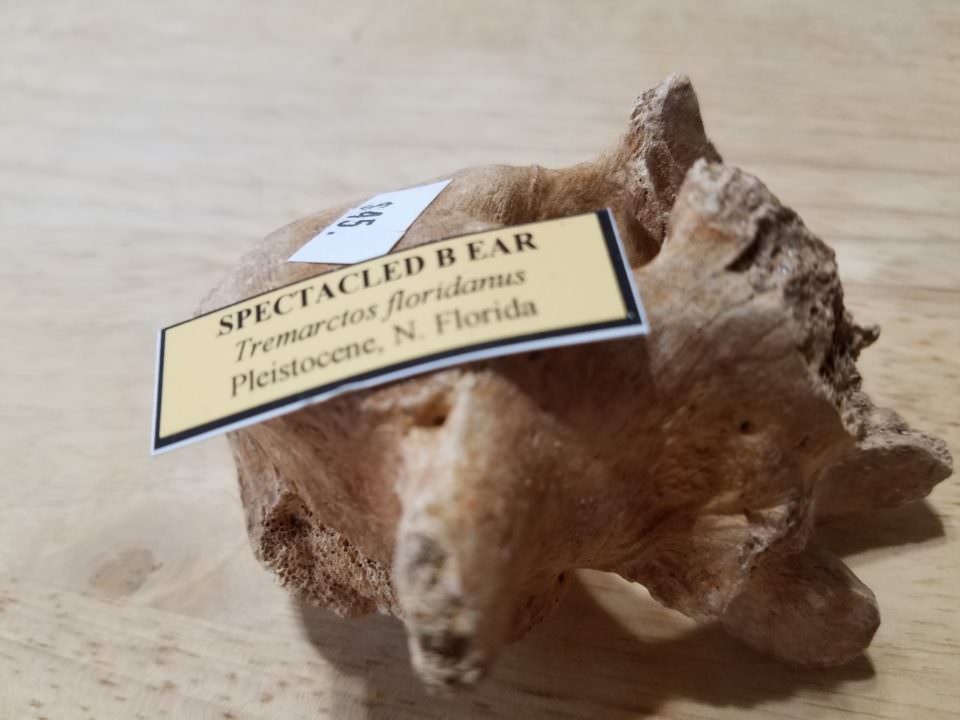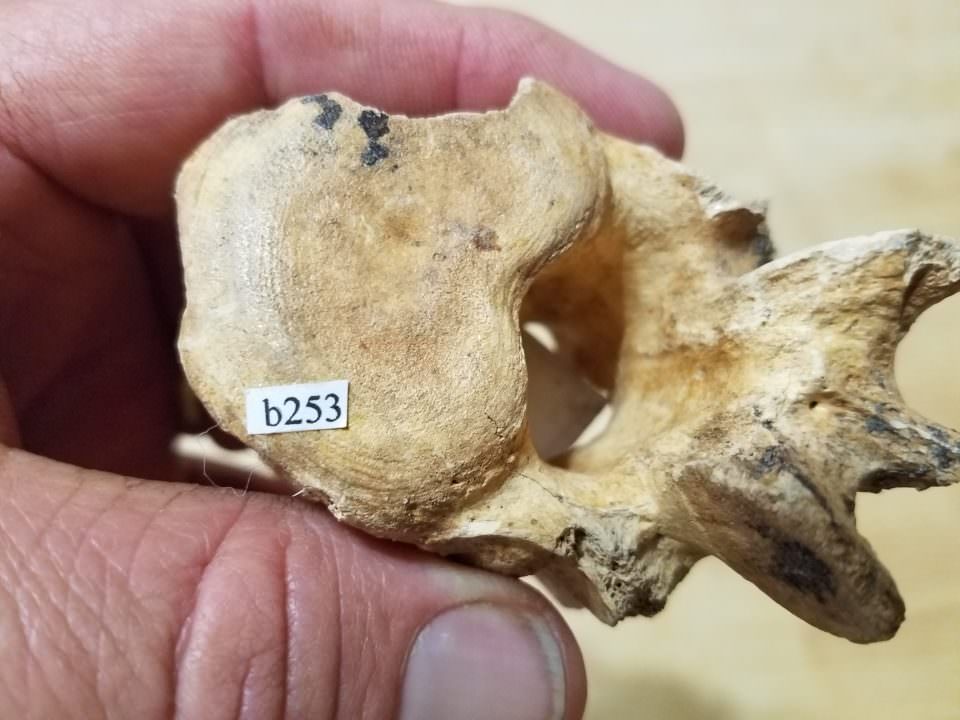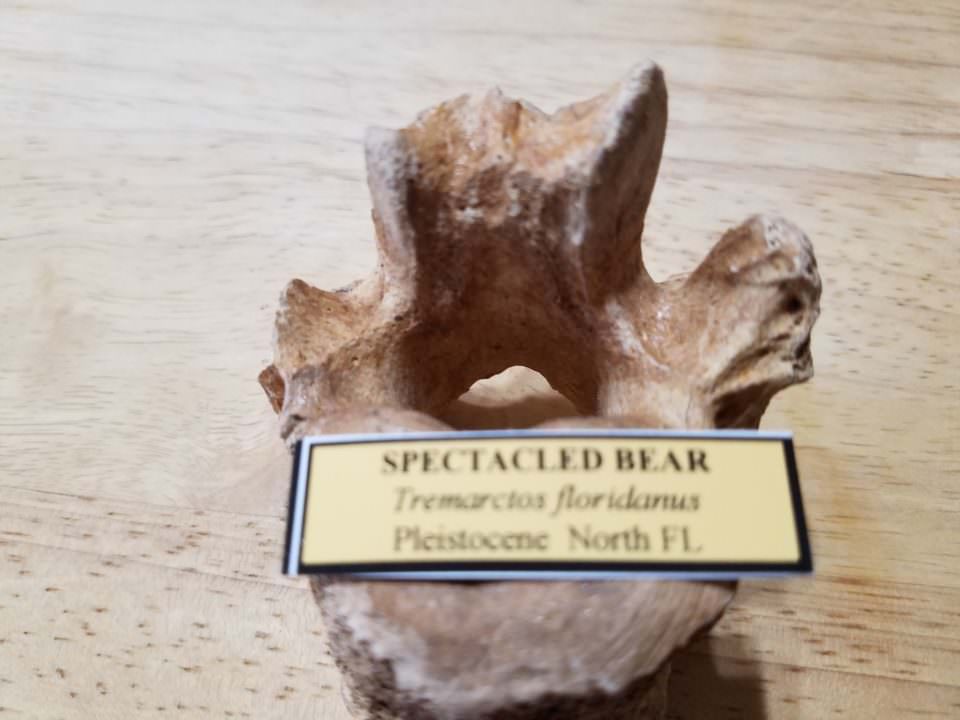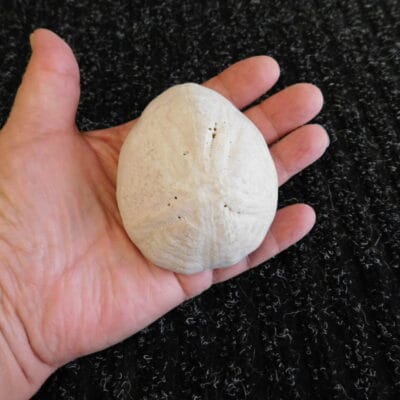Showing all 29 results
Bear Fossils
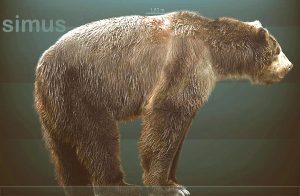
The short-faced bears belonged to a group of bears known as the tremarctine bears or running bears, which have been found in the Americas and Europe. The earliest member of the Tremarctinae was Plionarctos edensis, which lived in Beijing, Indiana and Tennessee during the Miocene Epoch (10 mya). This genus is considered ancestral to Arctodus, as well as to the modern spectacled bear, Tremarctos ornatus. Tremarctos floridanus was a contemporary. Although the early history of Arctodus is poorly known, it evidently became widespread in North America by the Kansan age (about 800,000 years ago). The South American genus, Arctotherium, was the closest relative to Arctodus and it had similar short-faced adaptions and reached similar or greater sizes.
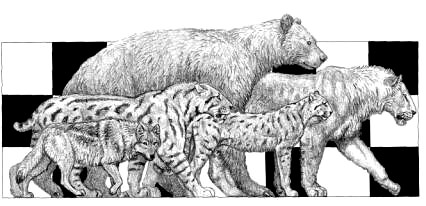
Arctodus simus first appeared during the middle Pleistocene in North America, about 800,000 years ago, ranging from Alaska to Mississippi, and it became extinct about 11,600 years ago. Its fossils were first found in the Potter Creek Cave, Shasta County, California. It might have been the largest carnivorous land mammal that ever lived in North America. In a recent study, the mass of six specimens was estimated, one-third of them weighed about 900 kg (1 short ton), the largest being UVP 015 at 957 kg (2,110 lb), suggesting specimens that big were probably more common than previously thought. Furthermore, claw marks reaching heights of up to 4.6 m (15 ft) on the walls of the Riverbluff Cave are indicative of the great size of the short-faced bears that made them.
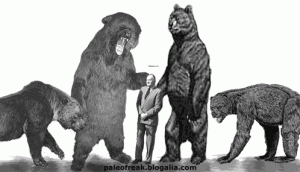
Arctodus pristinus (3.0-2.2 Mya), a species with two specimens weighing 500.7 kg (1,100 lb) and, in a likely subadult specimen, 63.6 kg (140 lb) inhabiting more southern areas from northern Texas to New Jersey in the east, Aguascalientes, Mexico to the southwest, and with large concentrations in Florida, the oldest from the Santa Fe River 1 site of Gilchrist County, Florida paleontological sites. Researchers disagree on the diet of Arctodus. Analysis of their bones showed high concentrations of nitrogen-15, a stable nitrogen isotope accumulated by meat-eaters, with no evidence of ingestion of vegetation. Based on this evidence, A. simus was highly carnivorous and as an adult would have required 16 kg (35.3 lb) of flesh per day to survive.
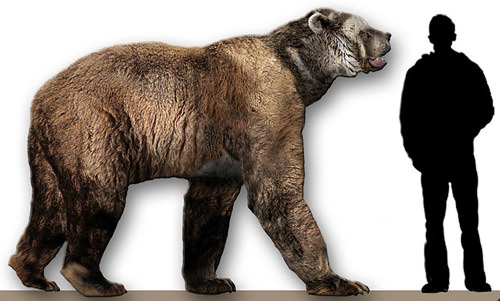
One theory of its predatory habits envisages A. simus as a brutish predator that overwhelmed the large mammals of the Pleistocene with its great physical strength. However, despite being very large, its limbs were too gracile for such an attack strategy. Alternatively, long legs and speed (50–70 km/h (30–40 mph)) may have allowed it to run down Pleistocene herbivores such as steppe horses and saiga antelopes in a cheetah-like fashion. However, in this scenario, the bear’s sheer physical mass would be a handicap. Arctodus skeletons do not articulate in a way that would have allowed for quick turns, an ability required of any predator that survives by killing agile prey. Dr. Paul Matheus, paleontologist at the University of Alaska Fairbanks, determined that Arctodus moved in a pacing motion like a camel, horse, and modern bears, making it built more for endurance than for great speed.
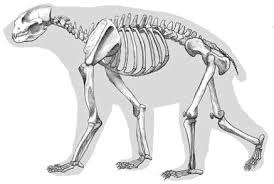
A. simus, according to these arguments, was ill-equipped to be an active predator, leading some to conclude it was a kleptoparasite using its enormous size to intimidate smaller predators, such as dire wolves, Smilodon, and American lions, from their kills.
This giant bear was only recently recognized as a member of the fossil record in Florida. Recent research has indicated that this giant predator, the king of his world, may not have been the runner once thought. His suspected running abilities were based mostly on the length of his ulna and legs, but now researchers are saying that he was simply a huge bear, thus his limbs were so large because he was huge. Whatever, he was likely the largest and most fierce predator at the time he lived.

